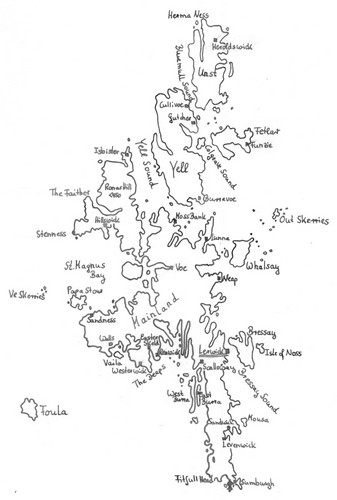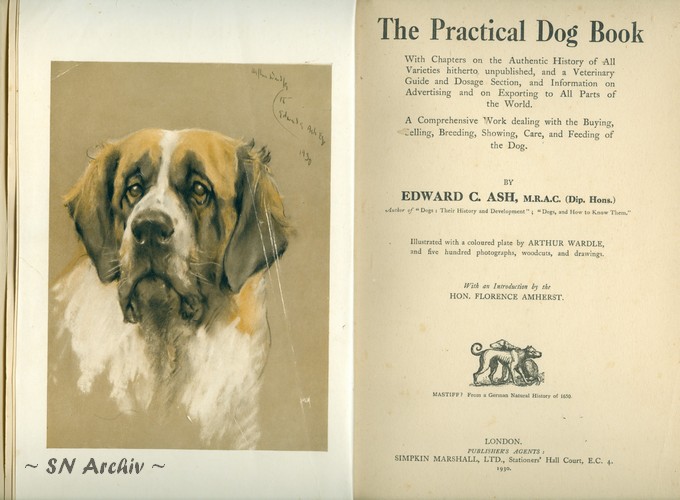 |
The Practical Dog Book Edward C. Ash, M.R.A.C. (Dip. Hons.), Simpkin Marshall Ltd., London, GB, 1930 (1st edition) |
This 346-page tome is an interesting general dog book "With Chapters on the Authentic History of All Varieties hitherto unpublished, and a Veterinary Guide and Dosage Section, and Information on Advertising and on Exporting to All Parts of the World. A Comprehensive Work dealing with the Buying, Selling, Breeding, Showing, Care and Feeding of the Dog." The book contains 500 photographs (some of them very small), woodcuts and drawings from various sources.
There is a one-page description of the Shetland Sheepdog with details about the origin of the breed, its duties at that time and the controversial discussion about the type division (original type - miniature show Collie type).
Unusually, there are kennel advertisements on the inside covers (including a full-page advertisement by Dr J. C. Bowie, a breeder in the Shetland Islands), which probably helped to finance this book.
Ad on the inside cover: 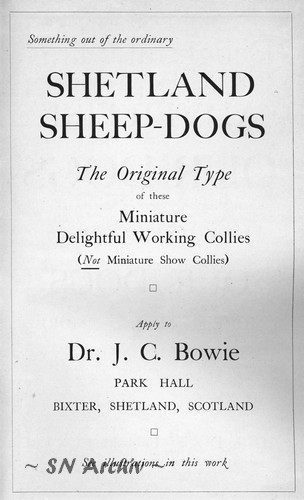
There is a 1 ½ page chapter on the Shetland Sheepdog detailing the rather unknown origins of the breed with references to the island laws on the keeping of herding dogs and the type "war" that was going on at the time (between the supporters of the original old-fashioned collie island type and the modern show collie type). Mr. Ash even believed in an imminent separation into two breeds.
Page 161: 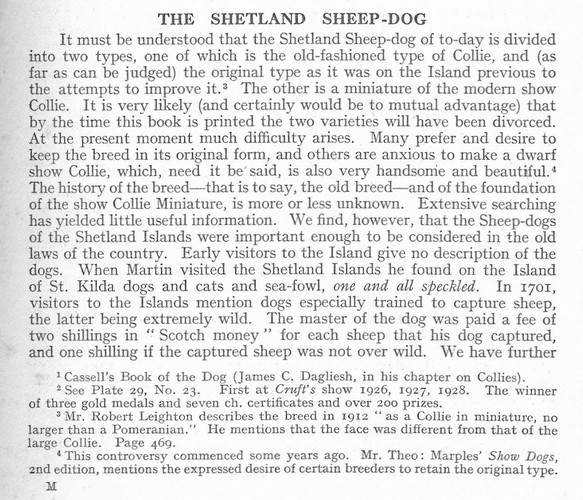 .
.
Page 162: 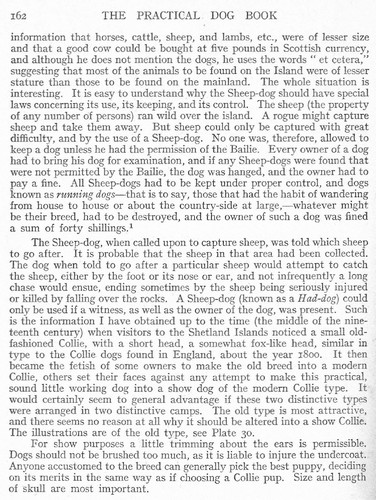
¹Hibberts "Shetland Islands." 1822
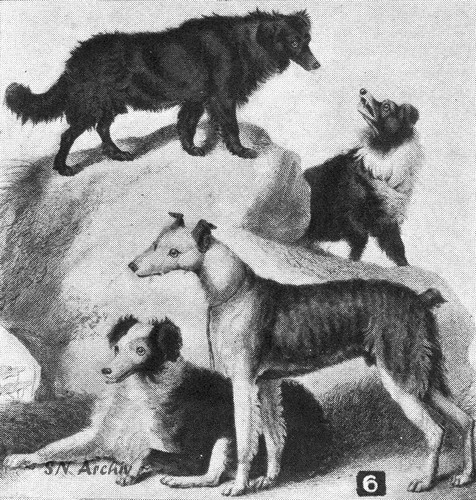 |
Page XIV: "PLATE 6 - No.6: Sheep-dogs (ibid.). Two typical Collies are seen in the background. The Collie as it was before it was improved. In the foreground a bob-tailed short-coated dog, with similar shaped hindquarters to those of the presend-day Old English Sheep-dog. A dog reclining has a wall-eye. Wall-eyes are frequently met with in the Old English Sheep-dog of to-day." | 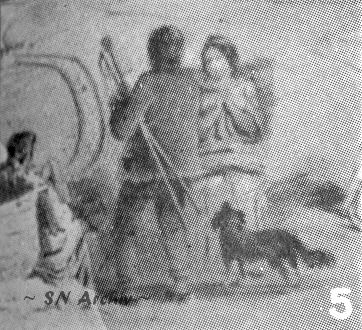 |
Page XXIX: PLATE 39 - No. 5: The Shetland Sheep-dog. The dog on the engraving by John Irvine, A.R.S.A., of 1840, of an island scene before the coming of the steamboat or the introduction of the Collie dog to the island. The type of dog depicted is similar to the one shown on Plate 30. (See notes to Plate 30)." |
Page XXVII: 
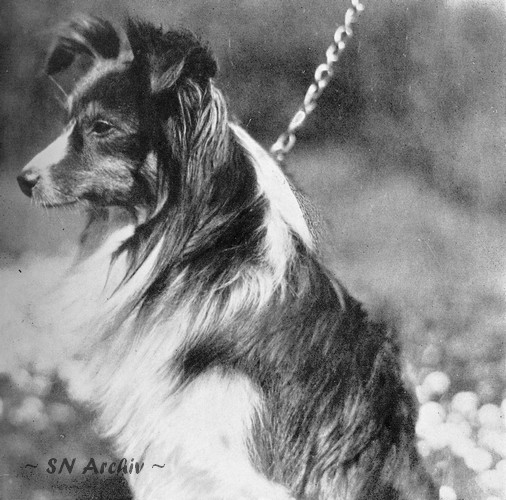
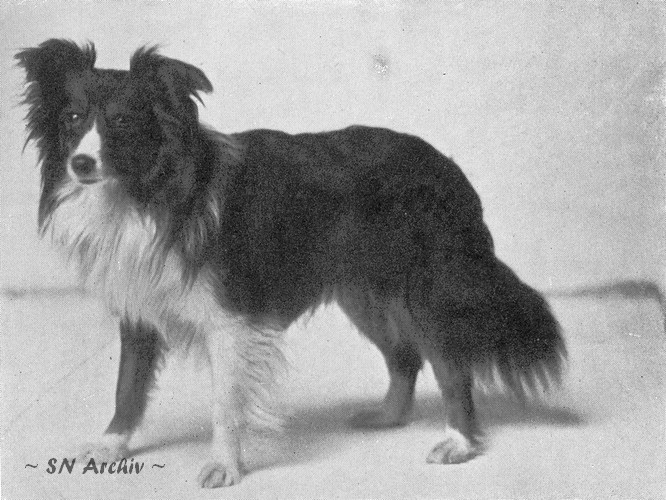
There are three other short passages in the book where the Shetland Sheepdog is mentioned. And "Chapter XV. DESCRIPTION OF BRITISH BREEDS AND THEIR SHOW POINTS" reflects the Shetland Sheepdog Standard:
Page 6: “What, indeed, could be better for the owner of restricted accommodation than, for example, a delightful little companion dog, such as the Scottish Terrier or the Dandie Dinmont, or the Schipperke, or the Schnauzer, or the Shetland Sheepdog, just to mention a few of the medium-sized dogs, so very popular wherever they go?”
Page 156: “The Welsh Corgi
“There is very little to be said about these dogs. It is claimed that they constitute an old breed, on the other hand, it is said that they are a cross of Shetland Sheep-dog with the Sealyham Terrier, and possibly Border Terrier.”
Page 198: “West Highland White Terriers, Barzois, Irish Wolfhounds, Elkhounds, St. Bernards, Samoyeds, Shetland Sheep-dogs, and some others are shown about as they are, scissors only being used to assist by squaring up the coat here and there, removing hair that gives an untidy appearance.”
Page 311: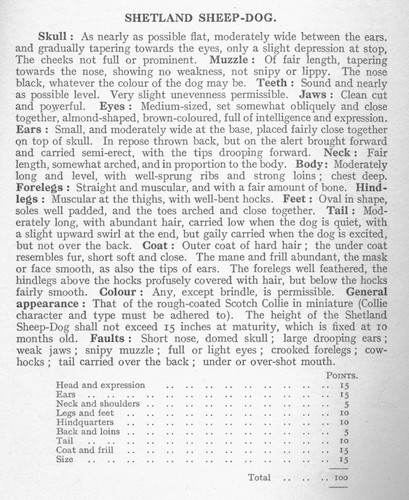
If you discover any errors in the text that may have been caused by the transcription, please let us know for a prompt correction.

